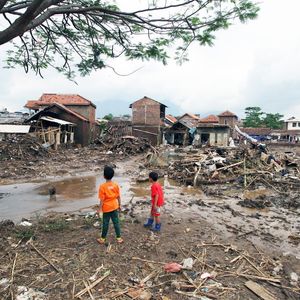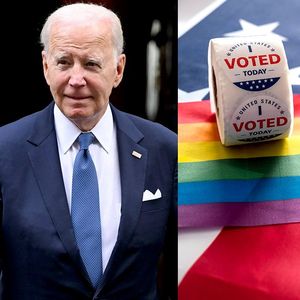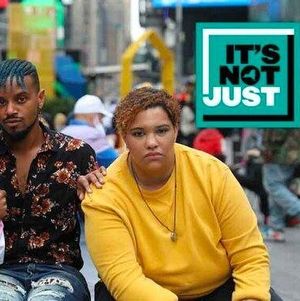
Treatment GuideJust DiagnosedSex & DatingAfrican AmericanStigmaAsk the HIV DocPrEP En EspañolNewsVoicesPrint IssueVideoOut 100
CONTACTCAREER OPPORTUNITIESADVERTISE WITH USPRIVACY POLICYPRIVACY PREFERENCESTERMS OF USELEGAL NOTICE
© 2024 Pride Publishing Inc.
All Rights reserved
All Rights reserved
By continuing to use our site, you agree to our Private Policy and Terms of Use.
It started as only five cases of a disease in a city of 3 million people'at three separate hospitals'over a seven-month period. It might have gone unnoticed. But luckily, that five gay men turned up with Pneumocystis pneumonia in Los Angeles between October 1980 and May 1981 was hard to ignore. Physicians got to work trying to diagnose the accompanying illnesses and to save the lives of the men, women, and children who began showing up in epidemic numbers, and researchers puzzled over just what was happening. 'It,' of course, was HIV disease. Those earliest cases were described in a profoundly prophetic editorial note in the Centers for Disease Control and Prevention's Morbidity and Mortality Weekly Report on June 5, 1981: 'Pneumocystis pneumonia in the United States is almost exclusively limited to severely immuno-suppressed patients. The occurrence of pneumocystosis in these five previously healthy individuals without a clinically apparent immunodeficiency is unusual.' It's an understatement, looking back over the 25 years since those initial cases showed up, to use the word 'unusual' to describe the devastating impact that HIV has had on the world. There have been some missteps and defeats over the decades, but there have been some milestone accomplishments as well. 1981 ''In its June 5 edition of Morbidity and Mortality Weekly Report the Centers for Disease Control and Prevention issues a report about five cases of Pneumocystis pneumonia cropping up among otherwise healthy gay men in Los Angeles. These turn out to be the world's first reported AIDS cases. ''The New York Times reports on July 3 'Rare Cancer Seen in 41 Homosexuals'; the article on Kaposi's sarcoma is the first media story on AIDS. 1982 ''After having categorized the new disease as an epidemic in 1981, the CDC drops the term gay-related immune deficiency for the more accurate acquired immune deficiency syndrome. ''The CDC links AIDS to blood and identifies four risk groups: gay and bisexual men, injection drug users, hemophiliacs, and Haitian natives. ''Gay Men's Health Crisis is formed in New York by Larry Kramer, Nathan Fain, Larry Mass, Paul Popham, Paul Rapoport, and Edmund White. ''Africa's first AIDS cases are reported. 1983 ''In March injection drug users, gay men, and others considered at high risk are urged not to donate blood, the first case of AIDS from a blood transfusion having been documented in December 1982. ''In May, Frenchman Luc Montagnier at the Pasteur Institute isolates the AIDS-causing retrovirus to be known as HIV. ''The National Association of People With AIDS is formed. 1984 ''Despite community protests, San Francisco officials close the city's gay bathhouses and sex clubs. 1985 ''The FDA approves the first HIV antibody test. ''Blood banks begin to screen donations for HIV. ''In April in Atlanta the first International AIDS Conference is held. ''The American Foundation for AIDS Research is founded with Elizabeth Taylor as national chair. ''In July it is announced that actor Rock Hudson has AIDS, bringing mainstream public awareness to the disease; he dies on October 2. ''An Early Frost, the first TV movie to focus on AIDS airs. ''AIDS cases are reported on every populated continent. Five Years of Devastation Cumulative U.S. AIDS cases: 23,130 Cumulative U.S. AIDS deaths: 14,6141986 ''In May, U.S. surgeon general C. Everett Koop issues a report that shocks and inflames many by calling for public health measures and sex education to combat the growing epidemic. ''The first panel of the Names Project AIDS Memorial Quilt is created. ''Supermodel Gia Carangi dies of AIDS-related complications; her life and death are chronicled in the HBO movie Gia in 1998. 1987 ''In March in New York City activist group AIDS Coalition to Unleash Power holds its first protest. ''The National Minority AIDS Council is formed. ''In March the FDA approves AZT, the first anti-HIV medication. ''In May, President Ronald Reagan speaks to Americans for the first time about AIDS. ''In June the United States bars HIV-infected immigrants and travelers from entering the country. ''Journalist Randy Shilts publishes And the Band Played On, his acclaimed chronicle of the epidemic. ''Under the direction of Sen. Jesse Helms, Congress approves legislation banning tax dollars for AIDS education materials that 'promote or encourage, directly or indirectly, homosexual activities.' ''The FDA adds label information to condoms saying they help prevent HIV infection. 1988 ''CDC officials and surgeon general C. Everett Koop mail the brochure 'Understanding AIDS' to all 107 million U.S. homes. ''The National Institutes of Health establishes the Office of AIDS Research and the AIDS Clinical Trials Group. ''The first World AIDS Day is held on December 1. 1989 ''National Institute of Allergy and Infectious Diseases head Anthony Fauci proposes allowing HIV patients access to experimental drugs outside clinical trial settings. ' The CDC issues its first guidelines for the prevention and treatment of Pneumocystis pneumonia. ''Following two years of protests by AIDS activists, Burroughs Wellcome lowers the price of AZT by 20%. 1990 ''In April, 18-year-old hemophiliac Ryan White dies; he had received an HIV-tainted blood transfusion five years earlier. The ostracism of White at his school and in his hometown become a symbol of the intolerance shown toward HIVers. In May, Congress authorizes funding for the Ryan White Comprehensive AIDS Resources Emergency Act. ''Congress enacts the Americans With Disabilities Act. ''AEGIS, a comprehensive AIDS news and research Web site, is founded by U.S. nun Sister Mary Elizabeth and the Sisters of St. Elizabeth of Hungary. ''The first National Conference on Women and AIDS is held. ''AIDS activists boycott the Sixth International Conference on AIDS, held in San Francisco, to protest the U.S. ban on HIV-positive visitors. ''Longtime Companion, the first feature film to deal with the impact of AIDS on friends and family, is released in theaters. Actor Bruce Davison is nominated for an Oscar for his performance. 10 Years of Devastation Cumulative U.S. AIDS cases: 198,235 Cumulative U.S. AIDS deaths: 123,2381991 ''Spurred by the case of Kimberly Bergalis, who claimed she was infected by her dentist, the CDC recommends restrictions for some HIV-positive health care workers. ''Pro basketball player Magic Johnson announces that he is HIV-positive. 1992 ''AIDS becomes the top killer of American men ages 25'44. ''Mary Fisher addresses the Republican National Convention as an HIV-positive person. ''In December the CDC adopts a new set of AIDS-defining conditions after activists charge that the agency is ignoring symptoms specific to injection drug users and women. The new set of conditions causes a surge in the number of new AIDS cases that will be reported in 1993. 1993 ''President Bill Clinton creates the White House Office of National AIDS Policy. ''The FDA approves the female condom. ''Four French officials are jailed for allowing HIV-tainted blood into France's blood banks. ''The Pulitzer Prize is awarded to Angels in America, a play by Tony Kushner about the AIDS pandemic. ''The AIDS-themed film Philadelphia, which focuses on an HIV-positive lawyer facing workplace discrimination, is released. Tom Hanks wins the Best Actor Oscar for his performance. 1994 ''AIDS becomes the leading cause of death among all Americans ages 25'44. ''An advertisement for the fashion chain Benetton shows an image of former president Ronald Reagan with Kaposi's sarcoma lesions on his face. ''The U.S. Public Health Service recommends the use of AZT to help reduce the chances of mother-to-child transmission of HIV during pregnancy and birth. ''Pedro Zamora, a 22-year-old HIV-positive man, appears on the San Francisco edition of the MTV reality program The Real World.1995 ''In February, Olympic champion diver Greg Louganis tells Barbara Walters in a televised interview that he has AIDS and was HIV-positive during his diving accident at the 1988 Olympics. ''President Clinton creates the Presidential Advisory Council on HIV/AIDS. ''In December, the FDA approves saquinavir, the first protease inhibitor to be prescribed to HIV patients. The era of combination therapy begins. 15 Years of Devastation Cumulative U.S. AIDS cases: 551,710 Cumulative U.S. AIDS deaths: 347,8131996 ''The Joint United Nations Programme on HIV/AIDS is founded. ''The International AIDS Vaccine Initiative is formed. ''In July at the 11th International Conference on AIDS, reports that combination therapy'with the addition of the new protease inhibitors'is helping extremely ill patients regain their health and leads to hopes about the effectiveness of what become dubbed 'HIV cocktails.' ''The FDA approves the first HIV viral load test. ''Voters in California and Arizona pass medicinal marijuana laws to allow access to patients who need the drug to combat nausea and overcome wasting syndrome. ''The AIDS-themed musical Rent, by Jonathan Larson, wins the Pulitzer Prize; the play also receives four Tony Awards, including Best Musical. ''AIDS researcher David Ho, MD, is named Time magazine's Man of the Year. 1997 ''In February a report states that deaths from AIDS-related complications fell 13% in the first six months of 1996. This first 'significant' drop in deaths since 1981 is attributed to protease inhibitors and combination therapy. ''In May a report reveals that some HIV cells 'hide out' in specific reservoirs in the body, protected from current drugs. ''Combivir, the first multidrug pill (containing Epivir and AZT) is approved. ''Congress approves a bill that speeds the FDA drug-approval process. ''The first reports of antiretroviral side effects like 'buffalo hump,' 'Crix belly,' and 'protease paunch' are reported. 1998 ''Although the U.S. Department of Health and Human Services determines needle-exchange programs are effective and don't encourage illegal drug use, President Clinton does not lift the ban on using federal funds for them. ''African-American leaders declare an AIDS-related state of emergency in black communities and help launch the Minority AIDS Initiative. ''In June the U.S. Supreme Court hands down a ruling that says asymptomatic HIV-positive individuals are protected under the Americans With Disabilities Act. ''Congress approves the Ricky Ray Hemophilia Relief Fund Act, which authorizes payments to hemophiliacs infected through unscreened blood products between 1982 and 1987. ''A report is released that says U.S. AIDS deaths were halved in 1997, down to their lowest levels in a decade. AIDS falls out of the top 10 causes of death among Americans. ''David Ho presents evidence at the Fifth Conference on Retroviruses and Opportunistic Infections that HIV most likely first infected humans in the 1940s or early 1950s. Eventual research also verifies the first known AIDS death when HIV-1 is found in the blood samples of an African man who died in 1959. The first U.S. case is traced to a teen prostitute with Kaposi's sarcoma who died in 1969. 1999 ''Research results reported in the journal Nature conclude that HIV was spread to humans by a mutated form of a similar virus that has lived in chimpanzees in regions of Africa for possibly hundreds of thousands of years. ''The World Health Organization announces that AIDS is the most deadly infectious disease'overtaking tuberculosis'and is the fourth leading cause of deaths worldwide. ''Research teams working independently announce they have discovered cases of newly infected individuals in the United States and Europe who have highly multidrug-resistant forms of the virus. 2000 ''The CDC reports that African-American and Latino men who have sex with men have higher HIV infection rates than white men in the same transmission category. ''The U.N. Security Council declares AIDS a global security threat. ''President Clinton signs an executive order to help developing nations manufacture or import generic versions of patented antiretrovirals. ''The 13th International Conference on AIDS is held in Durban, South Africa'the first time the gathering is held in a developing nation. 20 Years of Devastation Cumulative U.S. AIDS cases: 780,573 Cumulative U.S. AIDS deaths: 462,3722001 ' The U.N. General Assembly holds its first special session on AIDS. ''The World Trade Organization announces an agreement to allow developing countries to make or import generic medications in the case of public health crises. 2002 ''AIDS becomes the leading cause of death across the globe among people ages 15'59. ''Women now account for about half of all HIV-positive adults worldwide. ''The U.N.-backed Global Fund to Fight AIDS, Tuberculosis, and Malaria is created. 2003 ''The FDA approves Fuzeon, the first HIV entry inhibitor. ''President George W. Bush announces the President's Emergency Plan for AIDS Relief to fight HIV overseas. ''South Africa, which has the highest number of HIV-positive people in the world, announces plans to create an antiretroviral treatment program. 2004 ''Gilead Sciences and Bristol-Myers Squibb announce a collaboration to combine Sustiva, Emtriva, and Viread into a once-daily pill. The first two attempts fail, but a potential success is announced in early 2006. ''A formulation of Videx is the first generic anti-HIV medication approved for U.S. sale. ''Andy Bell, lead singer of the pop group Erasure, announces he is HIV-positive and tells his story in an HIV Plus cover story. 2005 ''Roche announces it will stop marketing Hivid and Fortovase due to low demand; these are the first two anti-HIV medications to be decommissioned. ''AZT's patent expires, and four generic versions are approved for the U.S. market. ''The World Health Organization announces that its '3 x 5' initiative'begun in 2003 to get 3 million HIV-positive people in poor nations on antiretroviral therapy by the end of 2005'will not reach its target. ''HIV Plus contributing editor and award-winning journalist LeRoy Whitfield, who made a strong stand about not initiating anti-HIV therapy, dies of AIDS-related complications at 36. 2006 ''Congress receives a bill to reauthorize the Ryan White Act that would shift federal funding formulas. If passed, it will leave some of the nation's hardest-hit cities with AIDS cases, such as San Francisco, Los Angeles, New York, and Washington, D.C., expecting ominous shortfalls in funding for public HIV resources. 25 Years of Devastation Estimated cumulative U.S. AIDS cases: 1,025,000 Estimated cumulative U.S. AIDS deaths: 559,000
From our Sponsors
Most Popular
The science behind U=U has been liberating people with HIV for years
June 04 2024 3:31 PM
As Pride party season begins, the CDC urges mpox vaccinations
May 16 2024 6:52 PM
Exclusive: We kiki with Q from 'RuPaul's Drag Race'
June 24 2024 11:37 AM
The freedom of disclosure: David Anzuelo's journey through HIV, art, and advocacy
August 02 2024 12:21 PM
The Talk: Thriving with HIV
May 08 2024 10:45 AM
The Talk: What HIV isn’t
May 07 2024 10:48 AM
Activist and philanthropist Bruce Bastian dies at 76
June 26 2024 1:28 PM
In honor of Juneteenth 2024, meet The Normal Anomaly
June 19 2024 1:39 PM
Plus: Featured Video
Latest Stories
AIDS/LifeCycle is ending after more than 30 years
October 17 2024 12:40 PM
Twice-yearly injectable lenacapavir, an HIV-prevention drug, reduces risk by 96%
October 15 2024 5:03 PM
How fitness coach Tyriek Taylor reclaims his power from HIV with self-commitment
September 19 2024 12:00 PM
Out100 Honoree Tony Valenzuela thanks queer and trans communities for support in his HIV journey
September 18 2024 12:00 PM
Kentucky bans conversion therapy for youth as Gov. Andy Beshear signs 'monumental' order
September 18 2024 11:13 AM
Why activist Raif Derrazi thinks his HIV diagnosis is a gift
September 17 2024 12:00 PM
Creator and host Karl Schmid fights HIV stigma with knowledge
September 12 2024 12:03 PM
Study finds use of puberty blockers safe and reversible, countering anti-trans accusations
September 11 2024 1:11 PM
Latinx health tips / Consejos de salud para latinos (in English & en espanol)
September 10 2024 4:29 PM
The Trevor Project receives $5M grant to support LGBTQ+ youth mental health in rural Midwest (exclusive)
September 03 2024 9:30 AM
Introducing 'Health PLUS Wellness': The Latinx Issue!
August 30 2024 3:06 PM
La ciencia detrás de U=U ha estado liberando a las personas con VIH durante años
August 23 2024 2:48 PM
Tratamiento y prevención del VIH por inyección: Todo lo que necesita saber
August 23 2024 2:41 PM
Sr. Gay World quiere asegurarse de que estés bien
August 23 2024 2:30 PM
Eureka is taking a break from competing on 'Drag Race' following 'CVTW' elimination
August 20 2024 12:21 PM
With a new case in Sweden, what is the new mpox outbreak and should you be concerned?
August 15 2024 4:48 PM
Trending stories
Most Recent
Recommended Stories for You

















































































